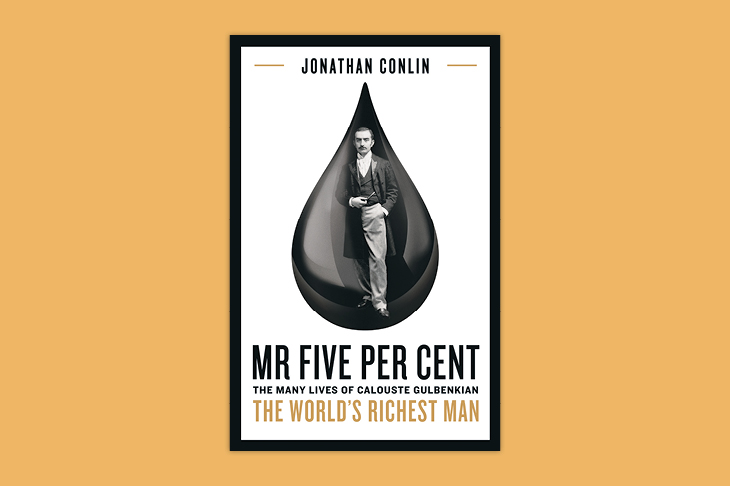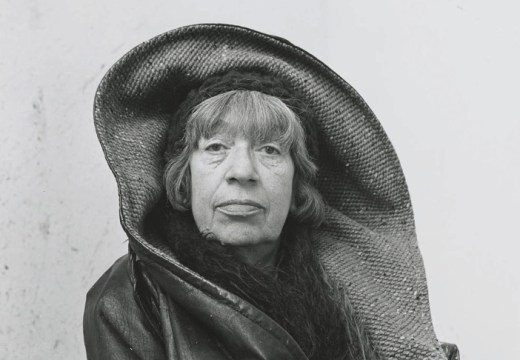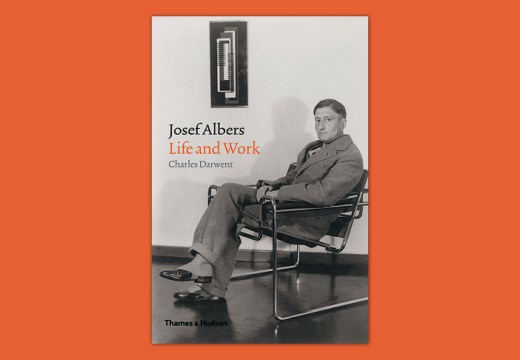Jonathan Conlin first came across Calouste Gulbenkian during his impressively detailed research on the history of the National Gallery – the subject of his PhD thesis, subsequently published under the title The Nation’s Mantelpiece. Gulbenkian was much courted by Kenneth Clark when he was director of the National Gallery; the hope was that the Armenian-born businessman would bequeath his art collection to the museum, to be housed in a separate building where the Sainsbury Wing now is, with plans drawn up by the American classicist William Delano. But Gulbenkian was upset by being declared an ‘enemy alien’ by the British government during the Second World War, and Philip Hendy, Clark’s left-leaning successor, had no desire to ingratiate himself with the plutocrat. So, while efforts were made by the curator John Walker to secure them for the National Gallery of Art, Washington, D.C., all 6,440 pieces of the collection ended up in Lisbon, in an eponymous museum.
Having started out by exploring Gulbenkian’s philanthropic tendencies, Conlin has turned his considerable historical and research skills to an investigation of all aspects of the man’s life. While he has been helped by the fact that there are extensive records of his financial transactions in the archives of the Gulbenkian Foundation, it has not been an easy task. Gulbenkian’s financial affairs were highly complex, beginning in the 1890s, long before he became involved in the Middle Eastern oil business, when he started lending large sums of money to dubious characters involved in the South African mines. Gulbenkian comes across as exceptionally astute and absolutely ruthless, pulling out of his family firm, not attending his mother’s funeral in Istanbul, using his wife to make friends with people who could help his business interests. I am full of admiration for the way that Conlin elucidates the complexities of the various cartels which controlled the sale of petroleum before the First World War, in all of which Gulbenkian was involved; but it requires a specialist interest in business history to follow the ins and outs of what was happening.
After the First World War, Gulbenkian installed himself in a large hôtel on the Avenue d’Iéna in Paris, which he obsessively remodelled. He installed an office on the ground floor where he could receive visitors and display two life-size Houdon sculptures of Apollo and Diana, the latter acquired in 1930 from the Hermitage; a grand dining room, library and picture gallery on the first floor, as well as an ‘Assyrian Room’ to show off his Egyptian collection; and a Lalique bathroom on the top floor, where he was hosed down by his valet in a niche lined in silver leaf. But he actually slept in the Ritz, where he was able to enjoy the company of his mistresses, who were selected by his housekeeper. (His Armenian physician, Dr Kemhadjian, had recommended that he have sex with young women as often as possible as a ‘rejuvenating tonic’.)
From Paris, Gulbenkian was able to control his interest in the oil industry in the Middle East. He fell out badly with Henri Deterding, with whom he had worked closely before the war in building up the interests of Royal Dutch-Shell. But he remained important to the French in enabling them to secure a lucrative share of the oil business through the establishment of what became Total, as well as to the Iranians and the Russians. Most of all, he acted for himself; he was free of national interests and determined to hang on to his lucrative five-per-cent share of oil dealings that he had negotiated before the war.
While Conlin is extremely informative about all aspects of Gulbenkian’s business dealings, he is much less so about the formation of his art collections. We are told that he began to collect paintings just after the turn of the 20th century when, in 1902, he bought misattributed pictures from Agnew’s, and in 1903 he sought lessons from Camille Benoît, a curator at the Louvre. But, at this stage, Gulbenkian’s taste was highly conventional, with a liking for Dutch landscapes, Grand Manner portraits and scenes of Venice, as well as fine French bibelots. The next we hear is that by 1925, two thirds of the paintings that later made up his bequeathed collection had been acquired. The bulk may have been bought in the early 1920s but, beyond the fact that his taste had extended backwards chronologically to acquire a Stefan Lochner and forwards for a Monet, we are told little about how and from whom his art collection was acquired, let alone how and why his tastes had evolved.
At the same time, Gulbenkian had developed an interest in Egyptian antiquities after seeing an exhibition at the Burlington Fine Arts Club in 1921, buying works for his collection at auction and with the help of Howard Carter. It was presumably during this period that Gulbenkian also assembled his holdings of Islamic art, including carpets, illuminated manuscripts and ceramics. Oddly, Conlin makes no mention of this part of his collection, surely important to any understanding of Gulbenkian’s character and taste, and his unusual ability to bridge the worlds of Paris and Iraq; moreover, he was a business associate of Alfred Chester Beatty, another major collector of Islamic art during this period.
Of course, Conlin has not set out to write a history of one man’s taste. But since Gulbenkian is remembered at least as much for the splendours of his collection in the northern suburbs of Lisbon as for his investments in oil in the early part of the last century, one would have liked more information – or speculation, at least – about his collecting motivation; not least how he compares to that other great oil man and collector, Jean Paul Getty.
Mr Five Per Cent: The Many Lives of Calouste Gulbenkian, The World’s Richest Man by Jonathan Conlin is published by Profile Books.
From the March 2019 issue of Apollo. Preview the current issue and subscribe here.
Unlimited access from just $16 every 3 months
Subscribe to get unlimited and exclusive access to the top art stories, interviews and exhibition reviews.














![Masterpiece [Re]discovery 2022. Photo: Ben Fisher Photography, courtesy of Masterpiece London](http://www.apollo-magazine.com/wp-content/uploads/2022/07/MPL2022_4263.jpg)
It’s time for the government of London to return to its rightful home